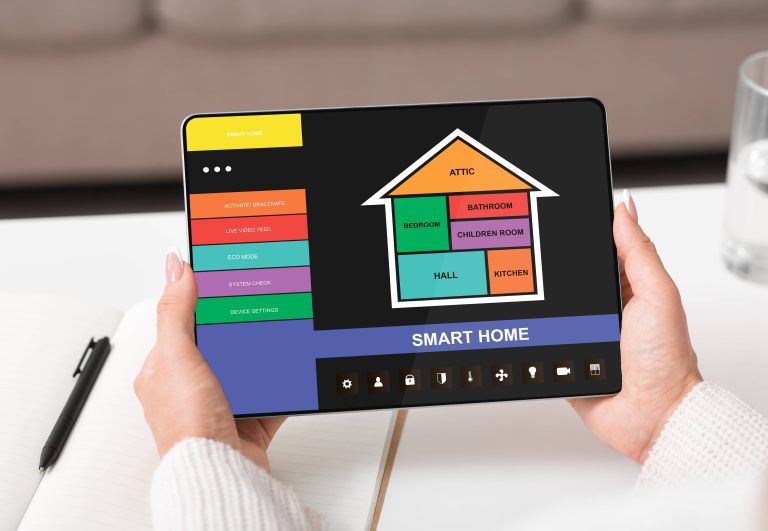
In recent years, the rise of smart home technology has significantly enhanced our living environments by bringing convenience, efficiency, and safety to the forefront. One area where these advancements particularly shine is in home security and emergency preparedness. Setting up emergency alerts within your smart home ecosystem can offer peace of mind and safeguard your home against various threats. This blog post will guide you through the essential steps and considerations for establishing effective emergency alerts in your smart home.
Understanding Emergency Alerts in a Smart Home Context
Emergency alerts are designed to notify you promptly of any immediate danger or unexpected situation, such as break-ins, fires, gas leaks, or medical emergencies. In a smart home setup, these alerts can be integrated into various devices and systems, ensuring that you receive critical information in real time, whether you’re at home or away.
1. Assess Your Needs and Risks
Before diving into the technicalities of setting up emergency alerts, it’s essential to conduct a thorough assessment of your home’s vulnerabilities and your family’s specific needs. Consider factors such as:
– Geographic Location: Are you in an area prone to natural disasters like earthquakes, floods, or hurricanes?
– Home Layout: Do you have multiple entry points that need monitoring?
– Family Members: Are there elderly individuals, children, or persons with disabilities in your household who may need special considerations during an emergency?
2. Choose the Right Smart Devices
To create a robust emergency alert system, invest in reliable smart devices tailored to your unique needs:
– Smart Smoke and Carbon Monoxide Detectors: These devices can detect fire and gas leaks, sending instant alerts to your smartphone or other connected devices.
– Smart Security Cameras: These cameras offer real-time surveillance and can be programmed to send alerts when they detect unusual activity.
– Smart Door and Window Sensors: These sensors can notify you when doors or windows are opened unexpectedly.
– Smart Locks: These locks can send alerts if someone attempts to bypass them or if they are left unlocked.
– Medical Alert Systems: If you have family members with health issues, consider incorporating medical alert devices that can signal for help during medical emergencies.
3. Centralize Your Alerts with a Smart Hub
A smart hub acts as the central command center for all your smart devices, enabling seamless communication and integration. Popular smart hubs include Amazon Echo, Google Nest Hub, and Apple HomePod. By centralizing your alerts through a smart hub, you can receive notifications across multiple devices, including smartphones, tablets, and even smart speakers.
4. Set Up and Customize Alerts
Once you have selected and installed your smart devices, the next step is to configure them for optimal performance:
– Connect Devices to Your Smart Hub: Ensure all your devices are properly linked to your smart hub. Follow manufacturer instructions for each device to pair them with your hub.
– Customize Notification Settings: Tailor the notification preferences for each device. For instance, you may want to receive immediate push notifications on your phone for smoke detector alerts but email alerts for security camera activity.
– Designate Emergency Contacts: Program your system to alert specific individuals in case of an emergency. This can include family members, neighbors, or even local authorities.
– Test Your Setup: Conduct regular tests to ensure that your emergency alert system is functioning correctly. This can help identify any potential issues and ensure that your devices are responsive in the event of an actual emergency.
5. Leverage Automation for Enhanced Safety
One of the most powerful features of a smart home is automation. By setting up automated routines, you can ensure your home responds optimally during emergencies:
– Automate Lighting and Sound: Program your lights to turn on and emit an audible alarm when smoke or carbon monoxide is detected. This can help wake up family members and guide them to safety.
– Automatic Door Locking: Configure your smart locks to automatically lock all doors when a security breach is detected.
– Home Monitoring Services: Subscribe to professional home monitoring services that offer 24/7 supervision and can promptly dispatch emergency responders to your home.
6. Maintain Your Emergency Alert System
An emergency alert system is only effective if it is well-maintained and up-to-date. Regular maintenance includes:
– Firmware Updates: Keep your devices’ firmware up to date to ensure they have the latest security patches and features.
– Battery Checks: Regularly check and replace the batteries in your devices to prevent them from failing during critical moments.
– Device Inspections: Periodically inspect each device for signs of wear or malfunction and replace any faulty equipment immediately.
7. Educate Your Family
The final step in setting up emergency alerts in your smart home is to educate your family members:
– Conduct Drills: Practice emergency drills regularly so everyone knows what actions to take when an alert is received.
– Explain Alerts: Ensure all family members understand the different types of alerts and the appropriate responses, whether it’s evacuating the home or contacting emergency services.
– Setup Quick Access: Teach everyone how to quickly access emergency contact information and use the alert system if necessary.
Conclusion
Setting up emergency alerts in your smart home is a critical component of modern home security and safety. By assessing your needs, choosing the right devices, centralizing alerts with a smart hub, customizing notifications, leveraging automation, maintaining your system, and educating your family, you can create a comprehensive and reliable emergency alert system. This proactive approach not only enhances your home’s security but also provides peace of mind knowing that you and your loved ones are well-prepared for any emergency. Embrace the power of smart technology to protect what matters most.







